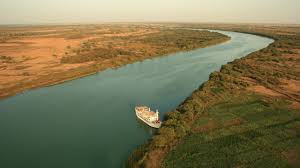The Organisation for the Development of the Senegal River (OMVS) Sunday warned of exceptional flooding on the Senegal River.
According to the latest hydrological data, the current situation is comparable to the historic flood of 1999, with significantly high water levels and flows. The Manantali dam, essential for flood regulation, has reached a critical level of 208.28 meters IGN, above its normal operating level.
River flows in the area are of concern. At Kayes, in western Mali, a flow of 4,236 m³/s was the forecast for 13 October, rising gradually to 5,751 m³/s on 16 October. The situation is similar at Bakel in eastern Senegal, where high flows are also expected, increasing the risk of flooding in areas along the river.
In view of these data, OMVS has activated the orange alert in all cities along the Senegal River. Flooding is possible in areas normally prone to flooding, especially in the valley and delta. OMVS is urging local authorities and the population to pay close attention to safety instructions and prepare for possible evacuations.
The organisation has prepared an alert plan based on the latest climatic and hydrological forecasts. This plan, which covers the entire river basin, includes maps of flood-prone areas, alert thresholds by region, and a plan for disseminating information to national and local authorities and the media. OMVS also points out that the link to this early warning system is available on its website for each country concerned.
The authorities are urged to take the necessary precautions to minimise dangers to the local population and to monitor developments closely.
The Senegalese interior ministry issued an alert on October 12 over the risk of major flooding in several regions of the country.
Alert levels were exceeded along the Senegal and Gambia rivers. The regions of Matam and Tambacounda, in the northeast and southeast respectively, have already suffered material damage, while Saint-Louis (north) could be the next area to be affected.
The ministry stresses that the observed flows, the highest since 1961, are due to climate change.
The government, in collaboration with OMVS and OMVG, is closely monitoring the situation and has set up an emergency plan. Local authorities are being mobilised and a pre-alert is being issued.
AC/lb/as/APA


